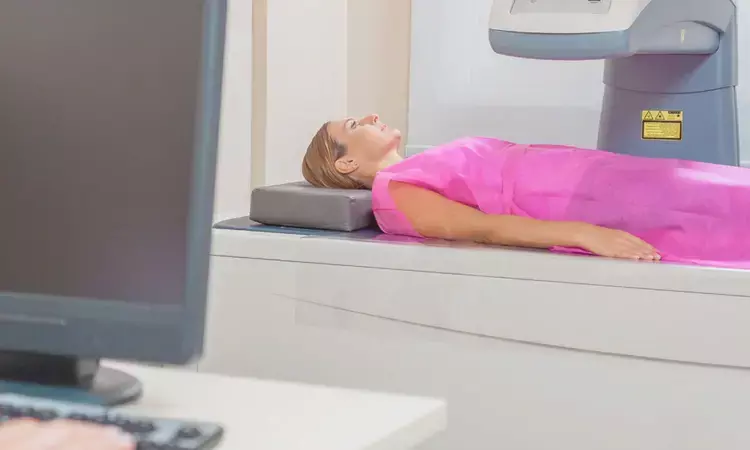- Home
- Medical news & Guidelines
- Anesthesiology
- Cardiology and CTVS
- Critical Care
- Dentistry
- Dermatology
- Diabetes and Endocrinology
- ENT
- Gastroenterology
- Medicine
- Nephrology
- Neurology
- Obstretics-Gynaecology
- Oncology
- Ophthalmology
- Orthopaedics
- Pediatrics-Neonatology
- Psychiatry
- Pulmonology
- Radiology
- Surgery
- Urology
- Laboratory Medicine
- Diet
- Nursing
- Paramedical
- Physiotherapy
- Health news
- Fact Check
- Bone Health Fact Check
- Brain Health Fact Check
- Cancer Related Fact Check
- Child Care Fact Check
- Dental and oral health fact check
- Diabetes and metabolic health fact check
- Diet and Nutrition Fact Check
- Eye and ENT Care Fact Check
- Fitness fact check
- Gut health fact check
- Heart health fact check
- Kidney health fact check
- Medical education fact check
- Men's health fact check
- Respiratory fact check
- Skin and hair care fact check
- Vaccine and Immunization fact check
- Women's health fact check
- AYUSH
- State News
- Andaman and Nicobar Islands
- Andhra Pradesh
- Arunachal Pradesh
- Assam
- Bihar
- Chandigarh
- Chattisgarh
- Dadra and Nagar Haveli
- Daman and Diu
- Delhi
- Goa
- Gujarat
- Haryana
- Himachal Pradesh
- Jammu & Kashmir
- Jharkhand
- Karnataka
- Kerala
- Ladakh
- Lakshadweep
- Madhya Pradesh
- Maharashtra
- Manipur
- Meghalaya
- Mizoram
- Nagaland
- Odisha
- Puducherry
- Punjab
- Rajasthan
- Sikkim
- Tamil Nadu
- Telangana
- Tripura
- Uttar Pradesh
- Uttrakhand
- West Bengal
- Medical Education
- Industry
Annual DXA Screening in Lung Transplant Patients in First Two Years may help prevent osteoporosis: Study

USA: A recent study recommends that lung transplant patients undergo annual screening with dual-energy X-ray absorptiometry (DXA) for the first two years following their surgery to monitor bone health. The study, published in the Journal of Heart and Lung Transplantation, highlights the increased risk of bone mineral density (BMD) loss in lung transplant recipients, which can elevate the likelihood of osteoporosis and fractures.
The researchers found that many lung transplant patients experience a significant decline in BMD after surgery. This loss can result in weakened bones, making them more prone to fractures. "Early detection of low BMD can facilitate timely intervention and treatment before fractures develop," the study authors wrote.
Each year, around 2,700 lung transplants are performed in the United States. These patients face an elevated risk of developing low bone mineral density (osteopenia/osteoporosis), which can lead to fractures associated with osteoporosis. Dual-energy X-ray absorptiometry is the gold standard for assessing bone mineral density. It provides a reliable measure of bone health and is widely used in clinical practice to diagnose osteoporosis and monitor changes in bone density over time. However, the ideal frequency for monitoring low BMD with DXA remains unclear.
To fill this knowledge gap, the stud authors Ronnie Sebro and Mahmoud Elmahdy from the Department of Radiology, Mayo Clinic, Jacksonville, FL, and colleagues assessed changes in BMD at the femoral neck, total femur, and lumbar spine (L1, L2, L3, and L4) following lung transplant. This retrospective cohort included 259 patients (69.9% male) who were monitored with serial DXA scans over a median follow-up period of 725 days (interquartile range (IQR): 361–1116 days) post-transplant.
Generalized linear mixed-effects models were employed to analyze the rate of change in bone mineral density (BMD) at each site, incorporating random intercepts and slopes. These models were adjusted for variables including sex, time, time-squared, baseline osteopenia/osteoporosis, active rejection, and their interaction terms. The final multivariable models for BMD measurements at the femoral neck, L1, and L4 included random slopes and intercepts, while models for the total hip, L2, and L3 BMD measurements included random slopes.
The key findings of the study were as follows:
- 65% of lung transplant patients had osteopenia or osteoporosis before their transplant.
- Men had higher baseline bone mineral density levels than women at all measurement sites.
- After the transplant, the greatest rate of BMD decrease occurred at the femoral neck.
- Patients with low BMD (osteopenia/osteoporosis) had significantly lower baseline BMD compared to those with normal BMD, however, they experienced a slower rate of BMD decline at all sites compared to those with normal BMD at baseline.
- All patients in the study received corticosteroids.
- 25% of patients had a history of active rejection.
- Patients with low BMD at baseline had significantly higher odds of receiving bisphosphonate therapy (Odds Ratio = 3.95).
- A significant change in femoral neck BMD was estimated to occur within 409 days and again at 867 days post-transplant.
"On average, lung transplant patients should undergo annual DXA screening for the first two years post-transplant, in line with the current guidelines from the International Society for Heart and Lung Transplantation (ISHLT)," the researchers concluded.
Reference:
Sebro, R., & Elmahdy, M. (2024). Optimized surveillance frequency for low bone mineral density (BMD) screening using dual energy X-ray absorptiometry (DXA) in patients after lung transplant. The Journal of Heart and Lung Transplantation. https://doi.org/10.1016/j.healun.2024.10.028
Dr Kamal Kant Kohli-MBBS, DTCD- a chest specialist with more than 30 years of practice and a flair for writing clinical articles, Dr Kamal Kant Kohli joined Medical Dialogues as a Chief Editor of Medical News. Besides writing articles, as an editor, he proofreads and verifies all the medical content published on Medical Dialogues including those coming from journals, studies,medical conferences,guidelines etc. Email: drkohli@medicaldialogues.in. Contact no. 011-43720751


